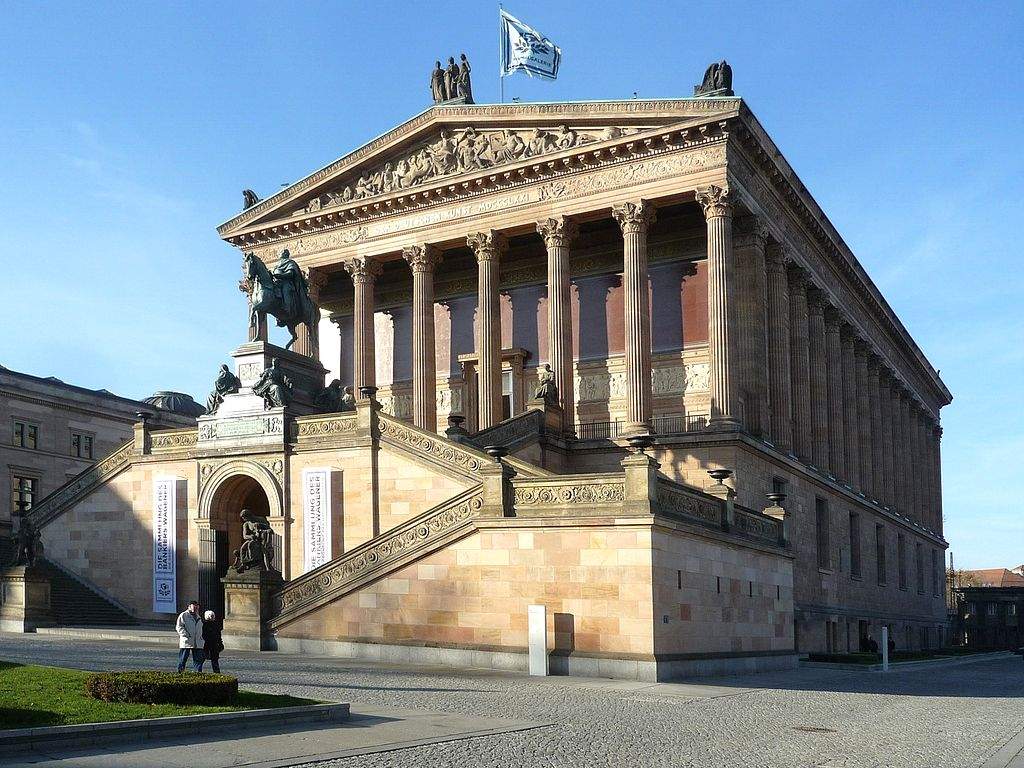After Austria, which announced the reopening of museums by mid-May, Germany and Switzerland are also preparing to reopen the doors of cultural venues. In Switzerland, the government has already been setting the agenda for the so-called “phase 2” for days: some personal services (doctor’s offices, hairdressers, beauticians, physiotherapists and the like) will open on April 27, markets, compulsory schools and stores that were still closed are scheduled to restart on May 11, and the “ban on assemblages” is expected to lapse by June 8, resulting in the reopening of museums, libraries and, in general, places of culture. Visitors will have to abide by the rules on safe distance, but the obligation to wear a mask will not be introduced: indeed, Switzerland has understood that supplies are not unlimited and that it is therefore better to reserve them for health workers and sick people (despite the fact that the population, according to a survey, is in favor of general use).
As for Germany, the approach for museums is one of regionalized reopening. In Brandenburg, some small museums have already reopened, with limitations on the maximum number of visitors who can enter the halls and security measures. For other states, dates have already been set: museums in Thuringia will reopen on April 28, in Berlin and Saxony on May 4. For other regions, however, there are no firm dates yet. As far as security requirements are concerned, there are no unique guidelines, and one can refer, however, to those issued by the Brandenburg Museum Association, which prescribes security plexiglass for ticket clerks, use of credit cards instead of cash, regular cleaning, disinfection of individual audio guides after each individual use, maximum number of visitors (one per fifteen square meters). In addition, group visits remain prohibited for the time being.
Then there is a list of measures suggested by the Deutscher Museums Bund, the national association of German museums, according to which the opening of museums and exhibitions should be gradual. The measures suggested are varied: limitation on the number of visitors, no queuing, protection of staff, separation of entrance and exit doors, safe distance between visitors, and transparency through signs informing visitors what hygienic measures are taken by the museum. The association also suggested that museums provide disinfectant gel dispensers, reserve special time slots for those at risk, and also advocates extending opening hours. Masks will not be mandatory, but could be distributed to visitors who request them. Finally, as far as tickets are concerned, online sales and the installation of scanners that could allow visitors to validate the admission ticket without it passing through the hands of the bgiliary clerk are suggested.
“With the help of these responsible measures,” writes the Deutscher Museums Bund in a note, “museums could reopen their doors while helping to contain the coronavirus. This would enable the population to be able to enjoy culture again.” The association is aware, however, that these measures will cmpose additional financial burdens on museums. “It is necessary,” it stresses, “to take into account the new staff requirements to enforce distance and hygiene regulations, and on the fact that reduced visitor numbers and the absence of events will result in less revenue. We therefore call on politics and our sponsors to provide financial support to museums so that they can implement the necessary measures and make a return to culture possible.” Finally, from the Deutscher Museums Bund comes an invitation to museums to network and share experiences, ideas and suggestions, with the understanding that “with a gradual and organized reopening of museums it is possible to send an important signal of a slow but sure return to normalcy.”
Nelal photo: Berlin, the Alte Nationalgalerie. Ph. Credit Manfred Brückels
 |
| Museums in Germany and Switzerland are preparing to reopen to the public. Here's how and when |
Warning: the translation into English of the original Italian article was created using automatic tools. We undertake to review all articles, but we do not guarantee the total absence of inaccuracies in the translation due to the program. You can find the original by clicking on the ITA button. If you find any mistake,please contact us.